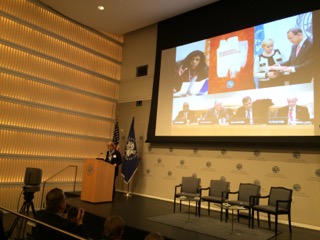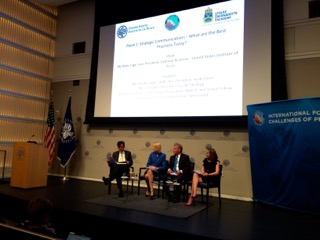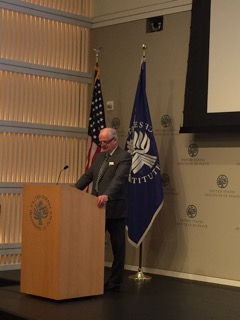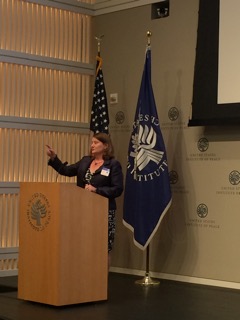ICT4Peace’s Daniel Stauffacher was invited by the US Institute for Peace and Folke Bernadotte Academy to participate in a Challenges Forum workshop on Strategic Communications in UN Peace Operations on 23 June 2015 in Washington DC.
“Peace operations do not generally succeed through the threat or actual use of military force alone. UN peace operations strive to combine its unique mixture of ‘soft’ and ‘hard’ power to create peace and stability. UN missions have begun to move from crisis communications and more classic 20th Century public information capacities to a more modern strategic communications approach, underpinned by segmented audience targeting, regularly refined and adjusted and supported by the use of digital, social and other new media as well as more traditional forms of outreach. But a decisively more strategic approach is urgently required if UN peacekeeping is to succeed in accomplishing its Security Council mandated tasks and missions.”
The Agenda of the workshop can be found here, and Daniel Stauffacher’s presentation here.
The main points of the Foundation’s input, the concept and content of which was fleshed out by Sanjana Hattotuwa, Special Advisor, ICT4Peace Foundation, can be summarised as follows:
There is an essential symbiosis between Strategic Communications to put out verified information out to the public to inform and to quell rumours, misinformation, disinformation
and
Crisis Information Management in the service of getting more reliable and timely information around a particular context, region, actor, process or incident to make decisions to (1) protect the peace or humanitarian mission and the victims and (2) reporting,
With Crisis Information Management (CiM), we mean both information generation (output) and well as information ingestion (input, from UN sources, crowdsourcing etc) during a crisis.
There is a need for “Digital Bluecaps”:
- There is a need for Information Managers, who are also able to act as public information officers, and who can leverage the same platforms used for situational awareness to push out information on a timely and strategic basis;
- There is a need to redefine roles and responsibilities within a mission around rapid response and identification of actionable information;
- There is a need for Training around multi-purpose social media platforms is needed.
- There is a need to create institutional architectures,able to ingest public domain information as well as produce and promote verified information.
Create a digital Peace Corps:
- Go beyond an emphasis on kinetic responses;
- Recognise value of efficient information management in generating effective outcomes;
- Create a cadre able to take on the worst (or best?) of ISIS, Al Shabab etc. using the same tools, techniques, apps and platforms they use for counter-messaging;
- Proactively produce content that addresses situational and contextual needs, augmenting hope, de-legitimising rumours and stemming spread of fear.
The video of Daniel Stauffacher’s presentation and panel discussion can be found here or seen below. The ICT4Peace Foundation’s presentation by Daniel Stauffacher is from 4:57:24 to 5:29:52.







